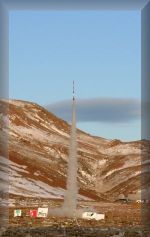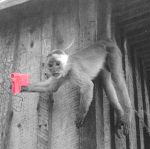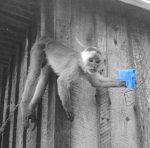What this site is about
Nourishing the spirit through learning, thinking, and discovery. Flights of fact and of fancy. Extraordinary achievements using ordinary things. Making ROCKETS!
What this site is NOT about
Bombs, weapons, crime, hate, and fear. If you have intent to harm persons or property, you may NOT use my methods! Rocketry is inherently dangerous. Adopt high ethical standards and practice them faithfully.

Amateur Icelandic Rocketry
Launched sugar rocket (Nov 2006).
First amateur rocket launched in Iceland by Steinn, Smeyr, and Magnus.


